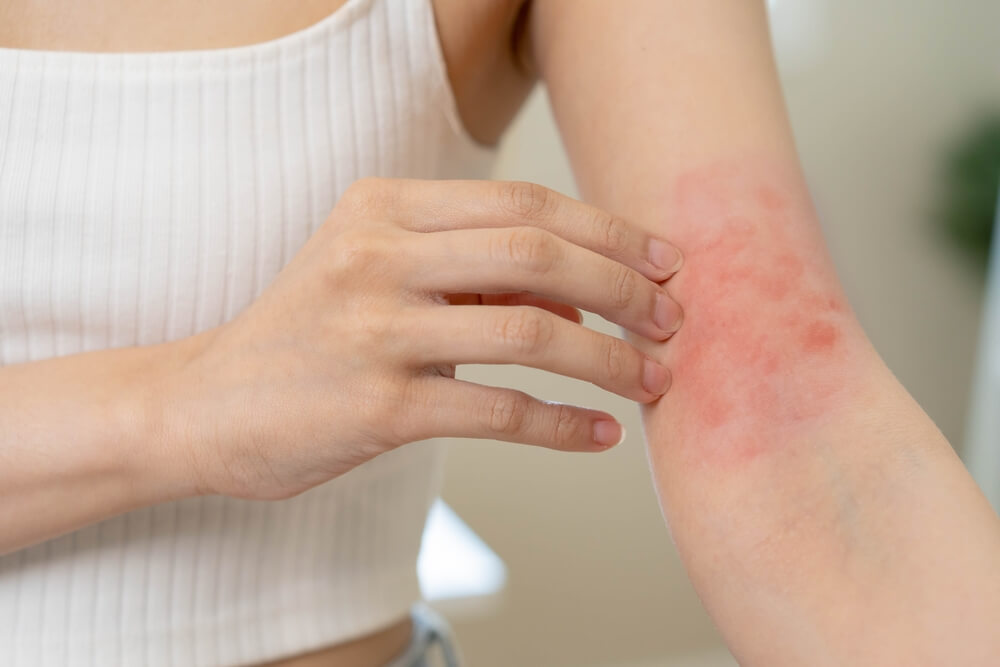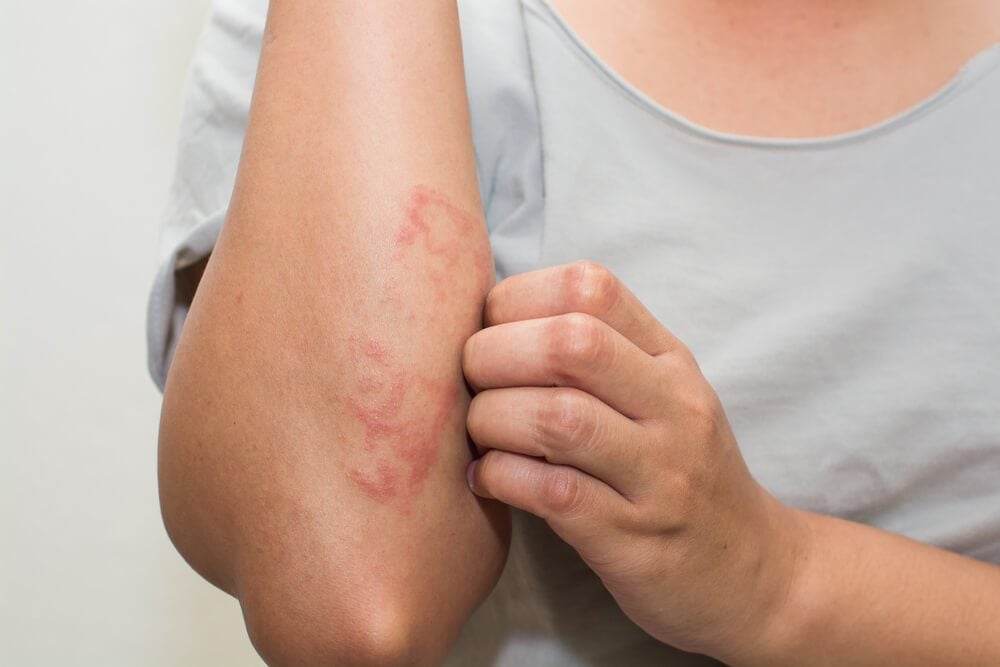
Dry skin allergies can be uncomfortable and distressing, especially when symptoms persist. Understanding the causes, identifying symptoms, and learning effective treatment options can help you manage this condition with ease. Here’s a comprehensive guide to the top 10 symptoms and treatments for dry skin allergies.
What is Dry Skin Allergy?

Dry skin allergy, also known as allergic dermatitis, occurs when the skin reacts to certain allergens or irritants, leading to dryness, itchiness, and sometimes more severe reactions. These reactions can result from exposure to allergens such as dust, pet dander, pollen, or specific chemicals found in personal care products.
10 Symptoms of Dry Skin Allergies
Recognizing the symptoms of dry skin allergies early can prevent further irritation and allow for prompt treatment. Here are the most common signs to watch out for:
- Itchiness
- Persistent itching is one of the most noticeable symptoms of a dry skin allergy. It can worsen over time and is often exacerbated by scratching, leading to further irritation and inflammation.

- Redness and Inflammation
- Allergic reactions can cause the skin to become red and inflamed, especially after exposure to an allergen. This can appear in patches and can vary in severity.
- Dry, Flaky Skin
- Allergies often lead to extremely dry skin, causing it to peel and flake. This is especially common around the elbows, knees, and hands.
- Rash Formation
- Red, blotchy rashes are a frequent symptom, often forming in areas that are more sensitive or frequently exposed to irritants.
- Swelling
- Swelling, particularly around the face, eyelids, or hands, can occur due to an allergic reaction, leading to puffiness and discomfort.
- Cracking and Bleeding
- Severe dryness may result in skin cracks, which can be painful and may bleed, making the skin more susceptible to infection.
- Bumps or Blisters
- Some individuals may develop tiny, fluid-filled blisters on the affected areas, which can be itchy or even painful when scratched.
- Burning Sensation
- A stinging or burning sensation is another common symptom, especially when the skin is extremely dry or inflamed.
- Darkened Patches
- Chronic dryness and irritation can lead to hyperpigmentation or darkened patches, particularly if the skin is frequently scratched.
- Tightness in the Skin
- Dry skin allergies can cause the skin to feel tight, especially after washing or exposure to water. This sensation can lead to discomfort and further dryness.
Effective Treatments for Dry Skin Allergies
Managing dry skin allergies involves a combination of treatments to relieve symptoms, moisturize the skin, and prevent future outbreaks. Here are some effective strategies:
- Moisturize Regularly
- Use a hypoallergenic, fragrance-free moisturizer multiple times a day, especially after washing your hands or showering. Thick creams or ointments are generally more effective than lotions for maintaining moisture.
- Avoid Allergens
- Identify potential allergens or irritants that may be triggering your symptoms. Common culprits include fragrances, soaps, and certain fabrics. Opt for hypoallergenic products and wear natural fibers like cotton.
- Use Mild Cleansers
- Harsh soaps can strip the skin of its natural oils, leading to more dryness. Instead, use gentle, hydrating cleansers that are specifically formulated for sensitive skin.
- Apply Corticosteroid Creams
- Over-the-counter hydrocortisone creams can help reduce itching, inflammation, and redness. For severe cases, a healthcare provider may prescribe stronger corticosteroid treatments.
- Stay Hydrated
- Drinking plenty of water can keep your skin hydrated from the inside out. Aim for at least eight glasses a day to help maintain your skin’s moisture balance.
- Use Humidifiers
- Dry indoor air can exacerbate skin dryness. Using a humidifier in your home, especially during winter, can add moisture to the air and relieve symptoms.
- Apply Cold Compresses
- To soothe itching and reduce swelling, apply a cold compress to affected areas for 10-15 minutes. This can provide temporary relief from discomfort.
- Try Oatmeal Baths
- Colloidal oatmeal baths are excellent for soothing dry, itchy skin. Oatmeal contains anti-inflammatory properties that can relieve irritation and moisturize the skin.
- Take Antihistamines
- Oral antihistamines can help reduce itching and other allergy-related symptoms. Speak with a healthcare provider to determine if antihistamines are suitable for you.
- Practice Good Skin Care Habits
- Avoid taking long, hot showers, as they can dry out your skin. Pat your skin dry gently after bathing, and apply moisturizer immediately to lock in hydration.
Final Thoughts
Dry skin allergies can be managed with proper care and effective treatment strategies. By recognizing the symptoms and following preventive measures, you can improve your skin’s health and reduce allergy flare-ups.
If symptoms persist or worsen, consult a healthcare provider to explore more advanced treatment options and create a personalized skin care plan.
READ ALSO:







